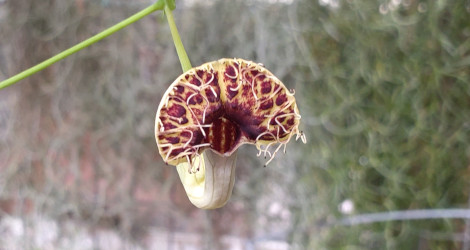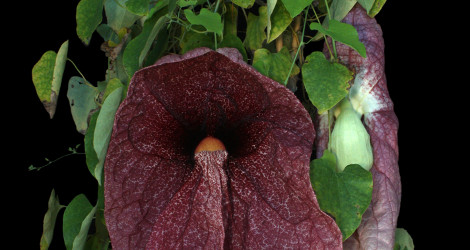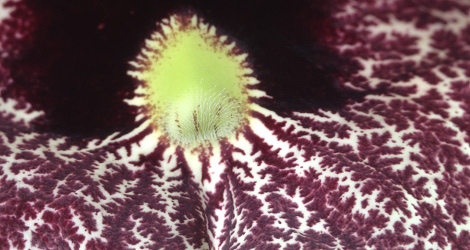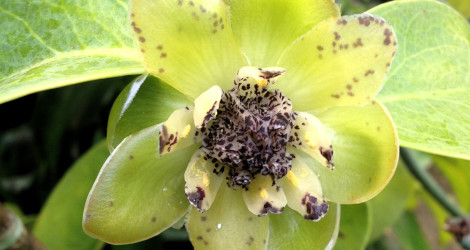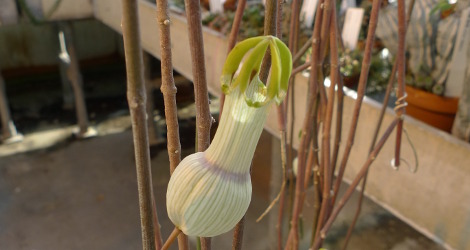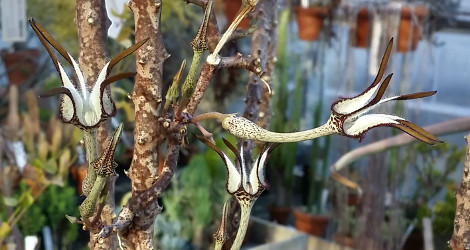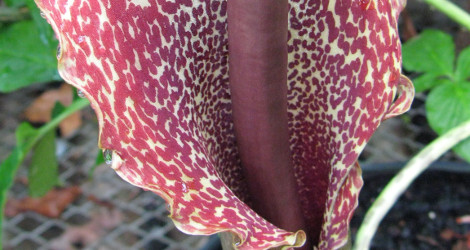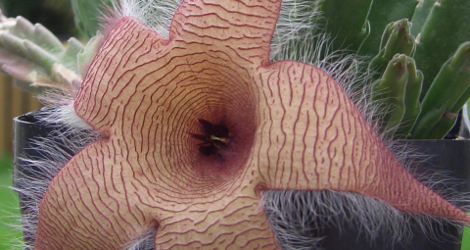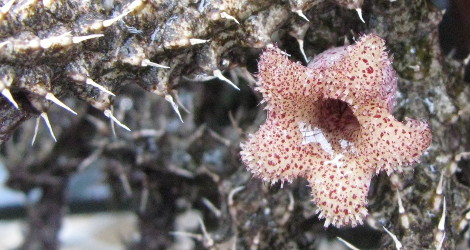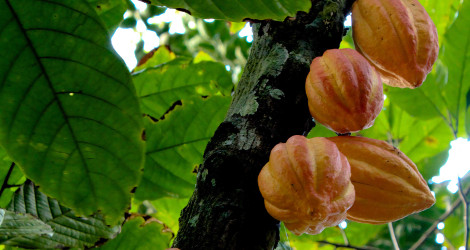SPECIAL COLLECTION:
Fly pollination (myophily and sapromyophily)
There are two types of fly pollination: myophily and sapromyophily. A diversity of flies (particularly bee flies (Bombyliidae), hover flies (Syrphidae), etc.) feed on nectar and pollen as adults, and regularly visit flowers. These are the myophiles. Sapromyophiles, on the other hand, normally visit dead animals or dung. They are attracted to flowers that mimic these odoriferous items! They obtain no reward and would quickly leave, but the plant may have traps to slow them down. These plants have a strong, unpleasant odor, and are brown or orange in color. They are not as common as myophilous plants. Myophilous plants do not tend to have a strong scent, and tend to be purple, violet, blue, and white, open dishes, or tubes.
Greenhouse Locator Map: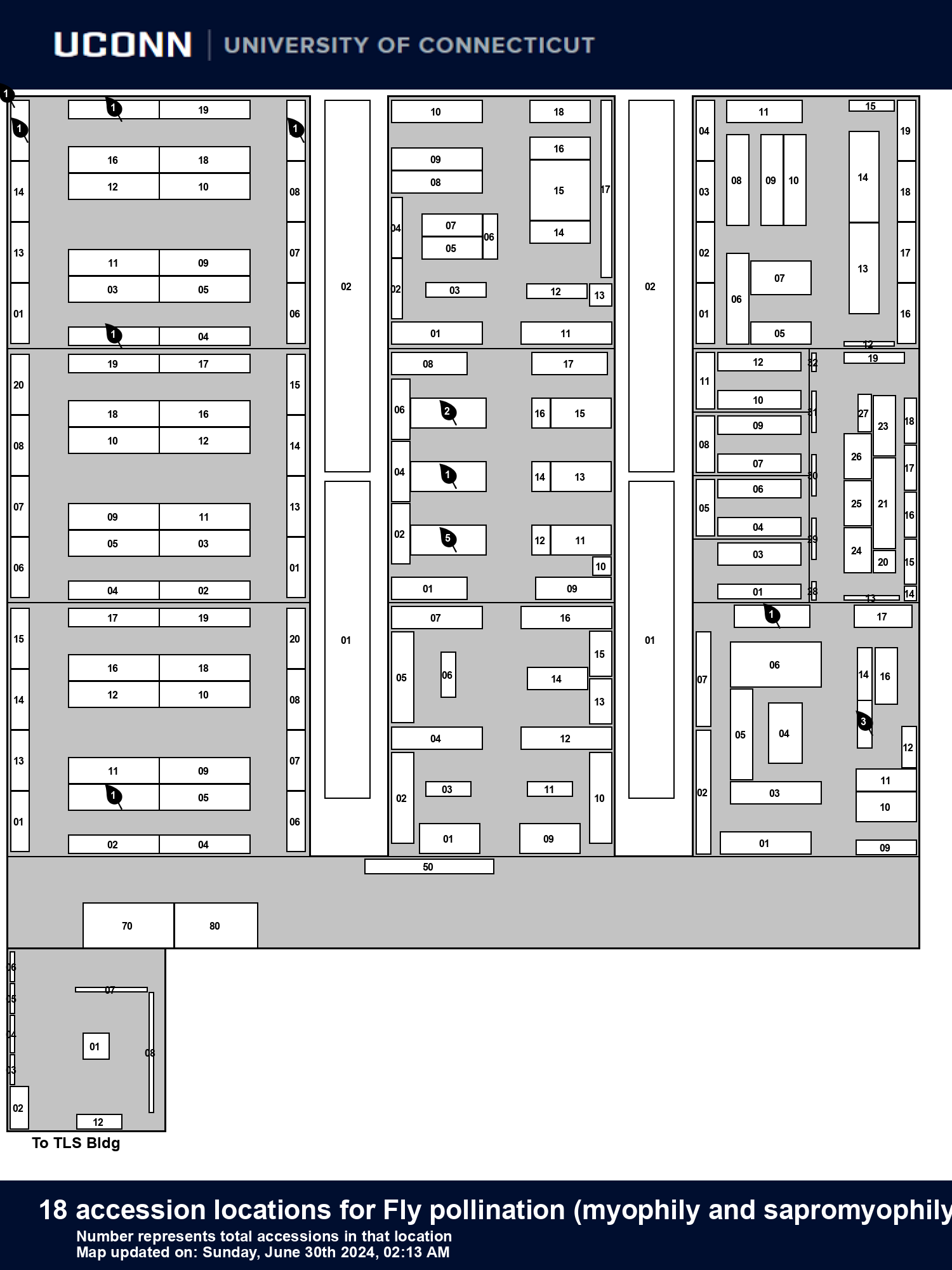
Flies tend to be important pollinators in high-altitude and high-latitude systems, where they are numerous and other insect groups may be lacking.
Greenhouse Locator Map:

data regenerated on Sat, 26 Jul 2025 02:13:56 -0400
17 Accessions:
Number in parentheses references locator map icons
- {1} Theobroma cacao - Cacao, Chocolate - Malvaceae


- {2} Theobroma cacao - Cacao, Chocolate - Malvaceae


- {3} Aristolochia arborea - Aristolochiaceae


- {4} Aristolochia ringens - Gaping Dutchman's Pipe - Aristolochiaceae


- {5} Aristolochia littoralis - Calico Flower - Aristolochiaceae


- {6} Ceropegia ampliata - Bushman's pipe (Eng.); Boesmanpypblom (Afr.) - Apocynaceae


- {6} Ceropegia ampliata - Bushman's pipe (Eng.); Boesmanpypblom (Afr.) - Apocynaceae


- {6} Ceropegia cimiciodora - Apocynaceae
- {6} Stapelia gigantea - Giant Toad Plant, Zulu Giant - Apocynaceae


- {6} Stapelianthus madagascariensis - Apocynaceae


- {7} Ceropegia stapeliiformis - Apocynaceae


- {8} Ceropegia linearis subsp. woodii - Rosary Vine - Apocynaceae

- {8} Welwitschia mirabilis ssp. namibiana - Tree Tumbo - Welwitschiaceae

- {9} Austrobaileya scandens - Austrobaileyaceae


- {10} Aristolochia fimbriata - Aristolochiaceae

- {10} Aristolochia gigantea - Brazilian Dutchman's Pipe - Aristolochiaceae


- {11} Sauromatum venosum - Indian Voodoo Lily - Araceae


W/C = Wild Collected
 = Currently Flowering
= Currently Flowering = Image(s) Available
= Image(s) Available = map available for this accession
= map available for this accession
 = voucher(s) on file at CONN for this accession
= voucher(s) on file at CONN for this accession = accession added within past 90 days
= accession added within past 90 days
